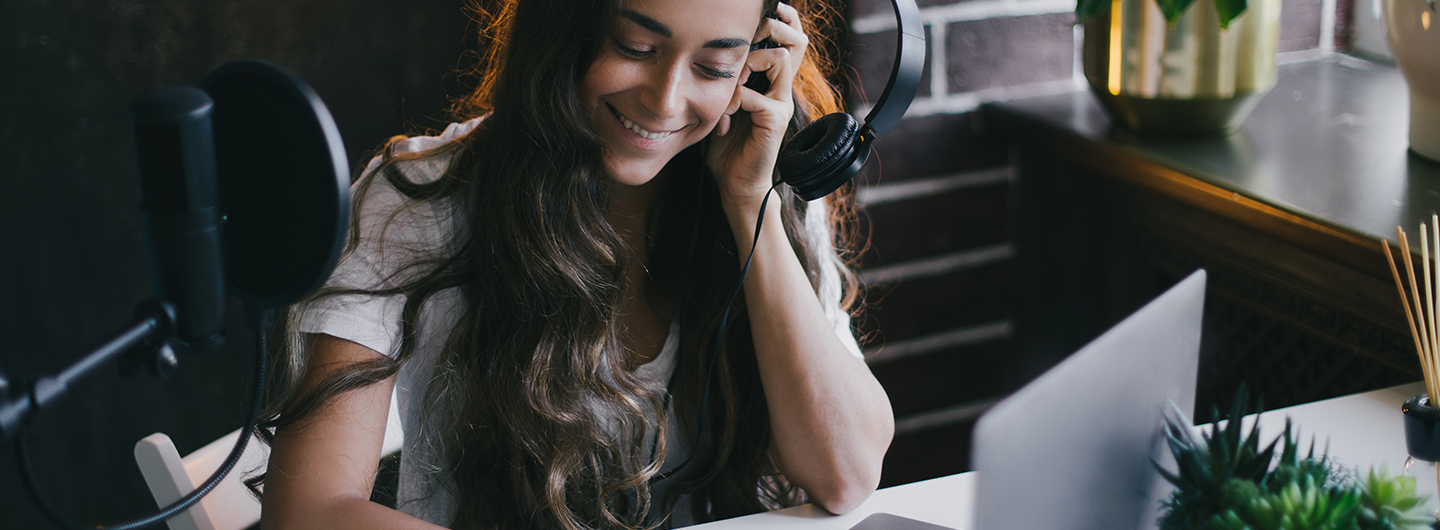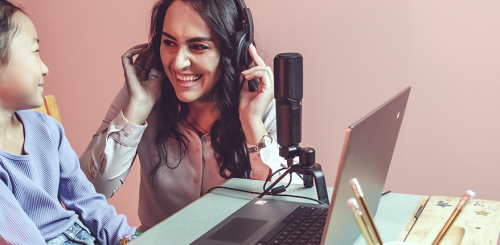
How Students Make Beats Online
September 16, 2022Today, the way people create beats is entirely different from the early days of music. The practice of beat-making began in the early 1970s within the same historically marginalized communities where hip-hop originated. Young people unable to access to traditional music education or the resources to purchase instruments turned to beat-making as a way to create new music. Early DJs from the Bronx, like Grandmaster Flash and Afrika Bambaataa, became famous for using turntables to make beats. As beat-making began to advance, brand new genres emerged, like electro-funk. Meanwhile, the foundations of rap as we know it today started taking shape.
Now, young people continue to experiment and advance emerging music genres with modern digital audio workstations (DAWs) that are more accessible than ever. Even novices without experience learn through cloud-based DAWs. These DAWS make it possible to create new, exciting beats. To make things even easier, teachers and classmates collaborate throughout the beat-making process.
If you’re a student learning to create beats or a teacher ready to enhance music education in your classroom, you can start making beats online with the right software today. All you have to do is get started!
The Impact of COVID-19 on Music Making
Since the World Health Organization declared COVID-19 a global pandemic in March 2020, life changed. Of course, social distancing regulations during the pandemic meant that artists couldn’t go on tour or play at any live events, which caused the global live concert industry to lose more than $30 billion in 2020 alone.
However, the restrictions and limitations of COVID-19 pushed people to find new outlets to release their creativity. Although no one predicted the pandemic’s impact on music, the impact reverberated through the entire industry.
More than ever, students, teachers, and other creatives create studio-quality music from the comfort of their homes. Artists write, produce, mix, and master music without spending thousands of dollars on studio equipment. Best of all, DAW software, like the Soundtrap Studio, allows audio engineers, songwriters, and musicians to collaborate from anywhere in the world. Meanwhile, streaming and social media give people the freedom to share their music with supporters and friends and gain viral attention virtually overnight.
Transformations in Audio Engineering
Even though people go to more concerts now than during the height of the pandemic, touring remains less lucrative than it used to be. Because of this, artists who aren’t touring have used their free time to create and record new music, providing audio engineers with more work than before COVID-19. Since artists couldn’t meet up in person to record, they began to connect with one another online. As a result, artists realized how easy it is to collaborate with people worldwide without stepping foot in a studio.
Some audio engineers stuck to traditional video conferencing platforms for online collaboration. However, tech-savvy audio engineers realized they could streamline the entire process using cloud-based DAWs. These revolutionary audio production platforms allow artists to collaborate from any wi-fi-connected device within the program. As student-based DAWs like Soundtrap for Education grew in popularity, young people realized they could create music too.
Anyone Can Stream Your Music
Physical music sales decreased long before the pandemic, but now it’s become clear that streaming music is the primary way for listeners to connect with artists. In early 2020, online music subscription revenues increased by 70%. Many listeners who couldn’t see their favorite artists at a live concert created their first streaming accounts.
The pandemic also created new opportunities for artists to expand their fanbase. When people couldn’t communicate with each other in person, they quickly transitioned to digital interactions with one another. With social media, everyday people can curate their brand and build a loyal following. It’s become normal for new and established artists to promote music in exciting ways on their social media platforms.
Today, young artists can cultivate their unique sounds, connect with like-minded individuals, and upload them directly to Spotify, the most popular streaming platform in the world.
Virtual Music Classes
Pre-pandemic, seeing students learning about making music online remained a rarity. Most people believed students needed to be physically present in a classroom to understand music. However, lockdowns and social distancing proved that our students can learn from anywhere.
As educational institutions embrace online learning, students are provided with access to technology that allows them to transcend physical distance and collaborate with teachers or peers from any location. It’s easier than ever for music teachers to guide students throughout each stage of the learning process with tools like Soundtrap for Education.
This cloud-based DAW allows teachers to walk students through each stage of audio production. With Soundtrap for Education, music teachers can separate students into different groups, assign projects, and offer feedback. This occurs all within a secure, seamless audio production platform.
How Students Can Make Beats Online
Making a beat involves more than one available method. Some people begin with a melody stuck in their head. Other people experiment with sounds until they find something that sounds interesting. In other cases, you might use pre-created loops or samples in your DAW and build the rest of the beat around it.
If you’re new to the world of creating beats, it can be intimidating to get started. However, experience provides the best teaching, and you can only gain experience by immersing yourself in the beat-making process.
Easily get started with these three simple steps.
1. Choose Your Sounds and Create Your Loops
When you’re ready to start, select a module such as a sampler, synth, or drum machine so that you can record the sounds directly into your DAW. If you don’t know how to play an instrument or are unfamiliar with music theory, you can always use the preset sounds in your DAW.
Once you have an idea of your beat’s direction, add components that make it sound more like a song. From here, you can program the beat within your DAW or play different tracks using a MIDI hardware controller. Incorporating drums, basslines, chord progressions, or melody is common during this step. During this period, you’ll create four or eight bars and loop them together to make your beat.
If you’re not sure how to create loops or sounds, don’t worry! Education-based DAWs like Soundtrap for Education comes with over 20,000 high-quality beats and presets. The possibilities are endless, whether you want synths, drum beats, or percussion instruments. Created for students, Soundtrap for Education ensures you’re never alone. You can get input from your music teacher or classmates anytime within the same program.
2. Arrange Your Beat
At this point, you’ll have a solid foundation for your beat. Arrange your loops inside your DAW’s “arrangement window” now. You can arrange each loop into the intro, verses, chorus, and outros.
Every beat sounds a little bit different, but most of them start the same way. A good place to start is with an intro that plays for about 4 bars. After that, the melody and hi-hat will play for the next 4 bars. As the beat progresses towards the verse, the energy will increase and play for another 4 bars. The beat will peak during the chorus as all the instruments play in unison.
3. Mix and Master Your Track
Finally, you can put the finishing touches on your track for a professional-sounding finished product! Audio mixing and mastering are two sides of the same coin. You’ll balance levels, incorporate panning, and process the audio during the audio mixing process. Then, you can correct any imbalances so your song is ready for release during audio mastering.
Even if your first beat seems relatively simple, audio mixing and mastering can get complicated. However, if you’re new to making beats online or are a teacher interested in bringing music education to your classroom, Soundtrap for Education makes learning how to create moments and other components of audio production easier for students. Allow yourself to experience the power of music and create unique beats for yourself and the rest of the world.
Students Can Make Beats Online with Soundtrap for Education
Soundtrap for Education provides the ultimate audio production platform for students and teachers to create and edit audio recordings. This innovative platform provides users with automatic transcription tools, interactive editing, and the ability to upload their podcast directly to Spotify. Students and teachers can easily tap into their artistic side with this intuitive audio platform that facilitates a creative learning environment for every subject, regardless of the student’s age or experience level.
With Soundtrap for Education, students and teachers can collaborate at any time or place with advanced cloud technology. In addition, the platform comes equipped with a robust resource portal, with tutorials, an external curriculum, and lesson plans to complete the educational experience. Teachers can ensure that students remain safe and secure with invite-only groups in Soundtrap’s versatile digital environment.
If you’re ready to enhance your educational experience with an intuitive cloud-based audio production platform, get started today with Soundtrap for Education!
 EDU Portal
EDU Portal


